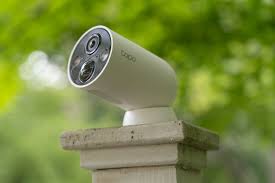In today’s fast-paced world, businesses are constantly seeking innovative solutions to streamline their operations and enhance efficiency. One such technological advancement that has revolutionized the way organizations manage employee attendance is the Biometric Attendance System Software.
A Biometric Attendance System Software utilizes unique biological characteristics such as fingerprints, facial recognition, iris scans, or voice patterns to accurately identify and authenticate individuals. This sophisticated technology eliminates the need for traditional methods like manual entry or swipe cards, ensuring a more secure and reliable attendance tracking system.
One of the key benefits of implementing a Biometric Attendance System Software is its ability to prevent time theft and buddy punching, where employees clock in on behalf of their colleagues. By requiring each individual to physically verify their identity through biometric data, organizations can ensure accurate attendance records and fair payroll calculations.
Moreover, the automated nature of the system reduces administrative burden and minimizes errors associated with manual attendance tracking. Employees can quickly clock in and out using their unique biometric markers, saving time and improving overall productivity.
From small businesses to large enterprises, the Biometric Attendance System Software offers scalability and customization options to suit diverse organizational needs. Whether it’s managing multiple locations, tracking remote workers, or integrating with existing HR systems, this software provides a flexible solution for efficient workforce management.
In addition to enhancing operational efficiency, biometric attendance systems also enhance security measures within the workplace. By restricting access based on verified biometric data, organizations can prevent unauthorized entry and safeguard sensitive areas from potential threats.
Overall, the Biometric Attendance System Software represents a cutting-edge solution for modern businesses looking to optimize their attendance management processes. With its advanced features, accuracy, and security benefits, this technology is reshaping how organizations track employee attendance effectively in today’s digital age.
Top 7 FAQs About Biometric Attendance System Software
- Which software is used in a biometric attendance system?
- What is the biometric system of attendance?
- How do you create a biometric attendance system?
- Which software is used in biometric attendance system?
- Which software is best for an attendance management system?
- Which biometric software is best?
- How to download BAS software?
Which software is used in a biometric attendance system?
When it comes to a biometric attendance system, the software plays a crucial role in ensuring accurate identification and authentication of individuals based on their unique biological characteristics. Various types of software are used in biometric attendance systems, depending on the specific biometric modality being employed, such as fingerprint recognition, facial recognition, iris scans, or voice patterns. These software solutions are designed to capture and store biometric data securely, compare it with registered templates, and generate real-time attendance records. Popular software options for biometric attendance systems include proprietary solutions developed by manufacturers of biometric devices, as well as third-party software that offers integration capabilities with existing HR and payroll systems for seamless workforce management.
What is the biometric system of attendance?
The biometric system of attendance refers to a sophisticated technology that utilizes unique biological characteristics such as fingerprints, facial features, iris scans, or voice patterns to accurately record and verify employee attendance. By capturing and storing individual biometric data, the system ensures precise identification of each employee, eliminating the possibility of time theft or buddy punching. This advanced system offers a secure and reliable method of tracking employee attendance, streamlining administrative processes, and enhancing overall workplace efficiency.
How do you create a biometric attendance system?
Creating a biometric attendance system involves several key steps to ensure its successful implementation. Firstly, you need to select the appropriate biometric technology based on factors such as security requirements, scalability, and user convenience. Next, you will need to integrate the chosen biometric hardware with compatible software that can capture and process biometric data effectively. This software should include features for enrollment of employees’ biometric information, data storage and management, real-time attendance tracking, and reporting capabilities. Additionally, setting up secure access controls and defining user permissions are crucial aspects of creating a reliable biometric attendance system. Regular testing, training sessions for users, and ongoing maintenance are essential to optimize the system’s performance and ensure smooth operations.
Which software is used in biometric attendance system?
When it comes to the software used in a biometric attendance system, there are several reputable options available in the market that cater to different organizational needs and preferences. Some popular choices include ZKTeco, eSSL, Matrix COSEC, Realtime Biometric, and Suprema BioStar. These software solutions are designed to seamlessly integrate with various biometric devices such as fingerprint scanners, facial recognition systems, and iris scanners to accurately capture and record employee attendance data. Each software package offers unique features such as real-time monitoring, shift management, leave tracking, and customizable reporting functionalities to streamline attendance management processes efficiently.
Which software is best for an attendance management system?
When it comes to choosing the best software for an attendance management system, there are several factors to consider to ensure optimal performance and functionality. The ideal software should offer robust biometric authentication capabilities, seamless integration with existing HR systems, user-friendly interface for easy navigation, scalability to accommodate varying organizational needs, and reliable technical support for smooth implementation and maintenance. Conducting thorough research, seeking recommendations from industry experts, and evaluating demo versions can help organizations make an informed decision on selecting the most suitable software that aligns with their specific requirements and budget constraints.
Which biometric software is best?
When it comes to choosing the best biometric software for your organization’s attendance system, several factors need to be considered to determine the most suitable option. The “best” biometric software varies depending on specific requirements such as the size of the workforce, budget constraints, security needs, and integration capabilities with existing systems. Some popular biometric software options include fingerprint recognition, facial recognition, iris scanning, and voice recognition technologies. It is essential to evaluate each software’s features, accuracy rates, scalability, user-friendliness, and customer support services before making a decision on which biometric software would be the most effective solution for your organization’s attendance tracking needs.
How to download BAS software?
Downloading Biometric Attendance System (BAS) software is a straightforward process that typically involves visiting the official website of the software provider or authorized resellers. Users can navigate to the designated download section, where they may be required to fill out a registration form or provide basic information before accessing the software download link. Once the download link is available, users can click on it to initiate the download process. Depending on the software’s size, internet speed, and device specifications, the download time may vary. It is essential to ensure that the BAS software is compatible with the user’s operating system and hardware requirements before downloading to guarantee a seamless installation and optimal performance.


